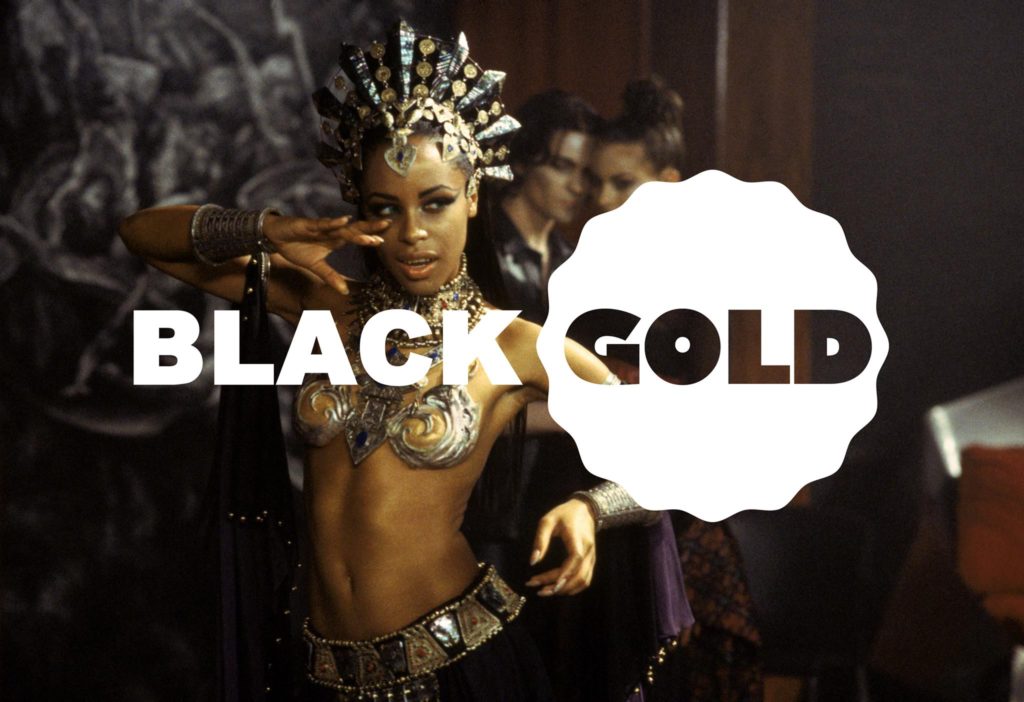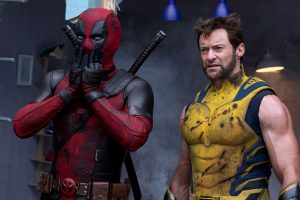Reviews include Deadpool & Wolverine, Doubles, and Mountain Queen: The Summits of Lhakpa Sherpa.
Black Gold: An Interview With Sarah-Tai Black
October 31, 2017
Platforming black filmmakers and black icons.
Since early this year, under-served Toronto audiences interested in black cinema and its screen icons have had a welcome home at the Royal Cinema, thanks to Sarah-Tai Black. The film programmer, arts worker, and writer claims that the series was born out of reaching her saturation point with the city’s largely homogenous repertory programming.
Enter Black Gold, whose idiosyncratic and unpredictable screenings have so far spanned cult smashes like F. Gary Gray’s Friday, under-appreciated but culturally significant titles like Hype Williams’s Belly, and esoterica like Edo Bertoglio’s Jean-Michel Basquiat-starring Downtown 81.
In November, Black Gold kicks off with a twentieth anniversary screening of Quentin Tarantino’s Jackie Brown, whose critical stock has steadily risen since its debut in the long shadow of Pulp Fiction in 1997. Angelo Muredda spoke to Black about Pam Grier, bringing black films to Toronto audiences, and the series’ tricky work of balancing between platforming black filmmakers and black icons.
Angelo Muredda: How does Jackie Brown hold up 20 years later?
Sarah-Tai Black: I think it’s one of those movies that ages really well with you. Rewatching it for the program, after having watched it as a teenager, I realized there’s so much emotional nuance to it. I’m excited to see how it ages further. It’s definitely his most mature film in terms of character and complexity and not just throwing things at the wall and seeing what sticks.
Does it age better than his other movies?
I think there’s less of his self-conscious house style, which has something to do with the Elmore Leonard source material. It grounds the film even if he still has the room to do his usual stylistic flourishes. I think he pays tribute to the source material without having to Tarantino it up. It’s also refreshing to see as his third film this story about middle-aged people, sad with life but trying to do it anyway.
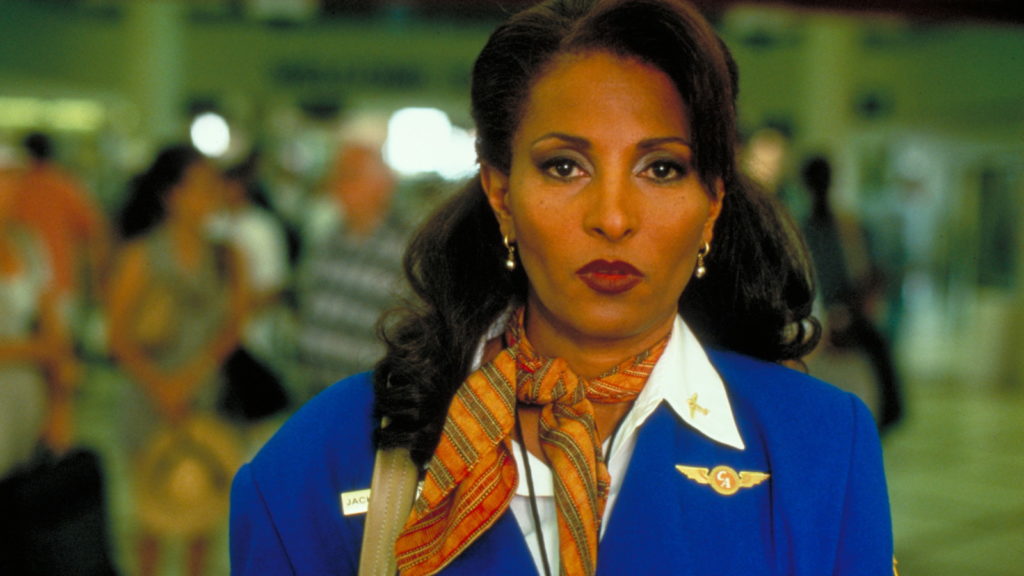
Which brings us to Pam Grier. When it came out a lot of the awards attention at least was focused more on Robert Forster’s comeback than on Grier’s. Is it easy to underestimate how good she is?
She was and is an older black actress playing an older black woman — meaning, not twenty-five — in a film centred on that experience. As for the Oscars, we all know why Helen Hunt won for the cinematic masterpiece that is As Good As It Gets. [laughs] I think it might be one of those things where, over time, there’s just been more appreciation for black icons. Pam Grier is the first black woman action star, and in recent years there’s been more attention paid to pulp figures in that ilk, thanks to the nostalgia of cult cinema and the celebration of genre canons.
Grier is amazing here. She’s almost playing a different person against every male cast member — working class modesty, vulnerable woman approaching middle-age, hyper-competent project manager, savvy heist leader. She’s cool, she’s vulnerable, she’s smarter than you. What do you think makes her so iconic?
Her huge canon of work makes her iconic. You can’t have a woman actor, and more specifically a black woman actor, do that much work in that specific a type of movie canon like her blacksploitation work, and not have her become a figurehead. I also just think she’s a great actress who has been incredibly undervalued with the lowbrow reception of blacksploitation films of the 1970s. People go in expecting a punchy story and “black stuff” but have to see that she’s a great actress. She’s also something of an exception in terms of having so many distinctly iconic roles, compared to someone like Wesley Snipes, who’s always going to be Blade, and who doesn’t have a Blade past Blade.
How do you think Grier is riffing off her work in films like Foxy Brown and Coffy in this movie?
I don’t want to say that Jackie Brown is the culmination of those efforts, because it puts an artificial stop point on her career. But it does feel like a grandmother performance for her, inviting appreciation for what she’s done before. Often with black actors in Tarantino films, it feels like he’s trying to get something problematic out of them, but we see a pushback in the actual performances — we see that with Samuel L. Jackson a lot, where if it was someone less experienced the characters would suffer for the way they’re scripted. In Jackie Brown, I think Grier pushes back with her unexpected gravitas. But it does feel like a grand gesture toward what she felt she was capable of prior to Jackie Brown, which she’s finally able to do here.
It seems like Grier has been conspicuously left out of a lot of the recent discussion of “strong women in movies” occasioned by the success of Wonder Woman. What are people missing when they leave her out of this narrative?
We all know black women invented everything. [laughs] The obvious reason is the undervaluing of black women onscreen, which also points to the undervaluing of black women audiences. With Wonder Woman you have these male powers realizing that you can get women, in this case predominantly white women, into a theatre. But they haven’t caught on to the fact that those audiences were already there, there just wasn’t a lot for them. With Pam Grier you have a case of an undervalued icon who hasn’t been given a stamp of approval by mainstream film culture, but who has meant so much to the black viewers — and the genre fans — who have watched her all along up to Jackie Brown. It’s great to see “strong female characters” doing well, especially in films directed by women. But it’s also good to acknowledge marginalized groups onscreen — giving space over to the importance of their iconography regardless of who directed it. That’s my feeling with Quentin Tarantino. He’s appropriative, and he fetishizes black culture, but you can’t deny that he’s given so many important roles to black actors.
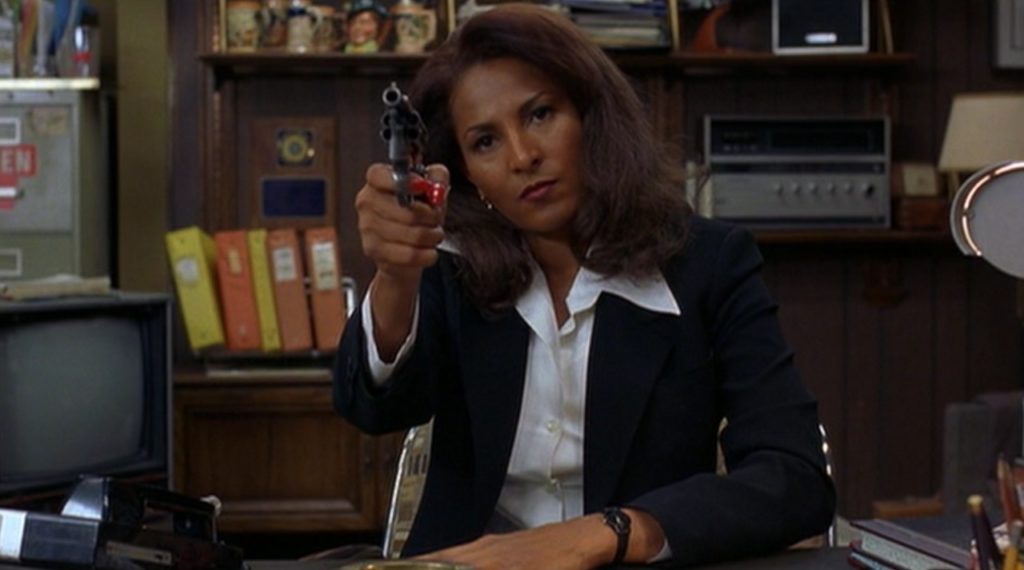
Do you find that you have to do this tricky calculus of balancing between work by black filmmakers and works of black iconography that might have been primarily steered by white filmmakers?
I’m always doing that work in my head and I’m always a bit frustrated by it, sure. Which is not to say it’s not important. All of the directors that have been in the program so far have been men, which sucks. But what do you do with a history of representation that is so much smaller than others? There are so many talented black women directors out there, but what I’m most concerned about for Black Gold at least is the characters onscreen. If you have a Jack Hill directing Pam Grier onscreen, that’s going to have more potential for me than a black woman filmmaker directing white women. That’s a different thing, which is also important — representation of women behind the camera. What I’m really interested in is the cultural value of black icons onscreen.
Do you think a lot about the audience? This is a hugely important program—you’ve even got a jump on TIFF’s Black Star series. What was your initial goal starting this series and where do you see it now, almost a year in?
The reason I started this was from working at a rep theatre and seeing too many of the same people seeing too many of the same movies. As a film student, and as a film fan, seeing one kind of dominant narrative for film spectatorship and exhibition becomes frustrating for you. I think about that a lot in terms of bringing in a lot of different demographics — not just black folk, though it is a black series programmed by a black programmer. I just want different kinds of people filling those seats.
In terms of what I’m programming, I’m always thinking about the audience, especially at the Royal, which has a strong genre foundation. As a genre fan, it’s easy for me to lean heavily on that, but I also want to push back against that expectation. What TIFF’s Black Star series is doing with the historical purview of black icons is really interesting, and widens that scope in a way I’m really happy about. I can’t see Black Gold necessarily doing a silent film series going back to the beginning of the twentieth century.
Will it not play?
I think it’s hard without the very broad, large institutional framing of TIFF. But I am more consciously trying to get more art films into Black Gold. I’ve been on an experimental narrative kick with films like Belly, which is one of those movies the mainstream has forgotten about but that has contributed so much in terms of visual style — I see you, Harmony Korine. [laughs] I want it to be something enjoyable, too. Historically there has been this pattern where the only black performances we laud, in terms of awards season, are maids and slaves. I want to bust that open, and make room for movies that mainstream film audiences might not think of as exemplary of black iconography, like Downtown 81, or going forward, Night of the Living Dead. I want to reclaim things that have been viewed in a different way.
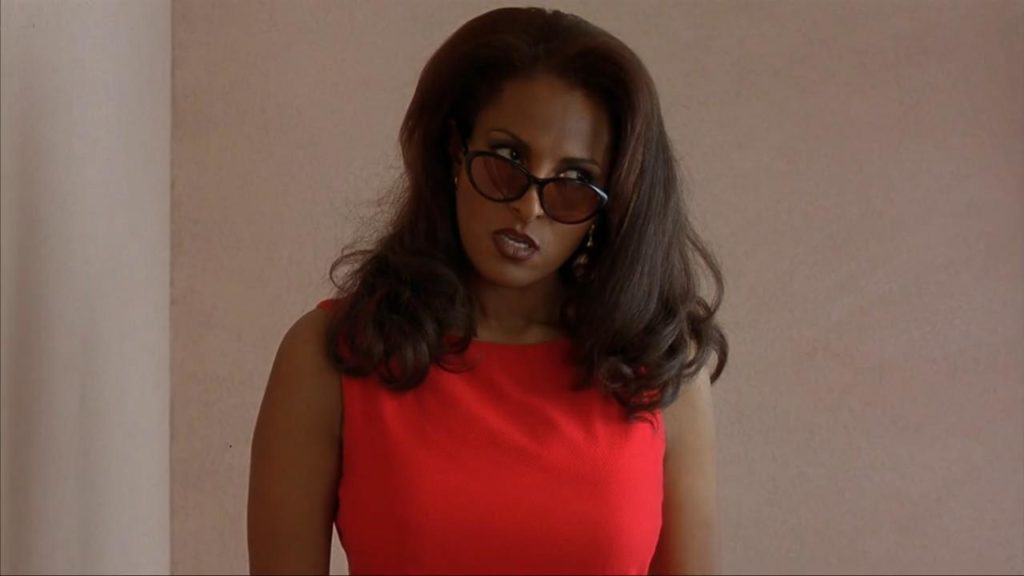
Is there something limiting about the association of these black icons with genre filmmaking?
I try to stay away from thinking in terms of positive and negative representations. I think historically when you look at the structural effects of racism in film, it’s clear why there is more black representation in genre cinema, given the nature of its production. It’s always going to be easier to make a genre film in the ‘70s than say, a Scorsese movie — although I’m not sure I want to see more black representation in a Scorsese movie. [laughs] He stays in his own lane and he does what he does well. But there is this sense that pigeonholing has less cultural import in genre cinema. I think of my own experience as a black viewer seeing something outside of what the narrative might want me to see. It’s a radical thing to see a black woman like Pam Grier onscreen, kicking ass, when you’re 10 years old and everyone else you see looks like the Olsen twins.
You open your screenings with great mini-lectures — semi-academic, yet personable. Is there something educational about the programming, either for your black or your non-black audiences?
I never want to make it seem like I know more than the audience, especially because the people who come to the Royal are encyclopedic in their knowledge. But you can probably tell from my introductions that I went to film school. The impetus behind giving that kind of specific contextual introduction is that I want to push back against being a black programmer who shows black films for a predominantly non-black audience. My idea is, if you come to this film under this banner of Black Gold, you probably care enough to hear five minutes about why this film is important for black viewers — at the very least, for me as a black viewer. There can be some pushback for that, especially with films I’m trying to recuperate like Downtown 81, where I was talking about Basquiat and police brutality. It’s my time to scream “Black lives matter” and trap all these different kinds of people in the room with me, because they paid. [laughs] I think it’s important to give that contextualization though, especially an audience has never had this kind of experience before on the level of identification. These screenings are going to bring different kinds of people into spaces they historically have not been brought into, at least at the Royal. The base demographic are already cinephiles, who might know a lot more about films than I do, but who might not have the real lived experience of being a black viewer. So there might be some opportunity there.
What are you excited about screening going forward?
I’m very excited for Space is the Place in December, since I’ve been waiting to hit the Royal with some weirdo black shit. This is the beginning of that. I think my intro for that is going to be a bit of a Sermon on the Mount, which you kind of have to do if you’re introducing Sun Ra. For the release of Black Panther I want to show Blade — a historical tribute to black male action stars, to give Wesley Snipes his due.

